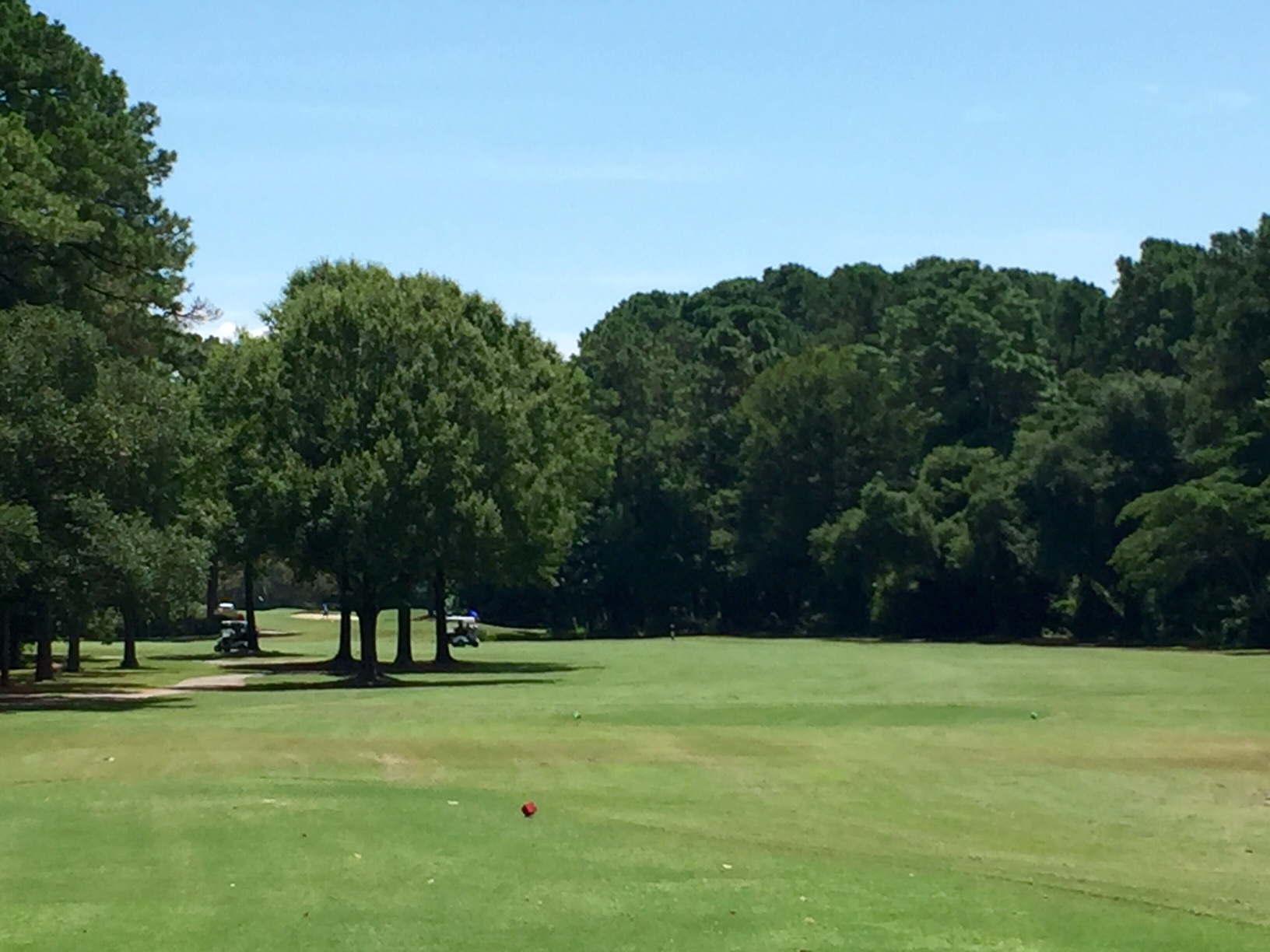You never hear Litchfield Country Club, one of the oldest layouts of the 100+ in the Myrtle Beach area, mentioned in the same sentence as Caledonia, True Blue, Pawleys Plantation, Heritage or most of its other neighbor courses on the south end of the Grand Strand. Willard Byrd, Litchfield's designer, was regarded well enough to be hired dozens of times to create layouts that were not too challenging to interrupt the relaxation vibe for those many players on vacation in the area. But Litchfield can be deceptively challenging, especially if you play the course from tee boxes that leave you a middle iron, rather than a short one, into the modestly sized and fairly well protected greens.
Two reasons compelled me to play Litchfield this past Thursday. First, it had just been named Golf Course of the Year by Myrtle Beach's golf club owners association, a nod, it seems, to the club's 50th anniversary year but still putting it in company with the above noted layouts, most of them past winners of the award. Second, Litchfield is one of the 22 local courses owned by Founders Group International, a China-based company that owns Pawleys Plantation Country Club, where I have been a member for 16 years. My membership provides me with discounted play at all other Founders clubs, including Grande Dunes, TPC Myrtle Beach, Willbrook Plantation and the River Club. My round at Litchfield was priced at just $33, cart included. I hadn't played the course in more than 20 years and thought I might engage in a little nostalgia with one of the original five in the Myrtle Beach area.

It isn't until the finishing hole at Litchfield Country Club that water is in play in front of a green.
Perhaps on a high from the recent award or well trained in the arts of customer service, the greetings at the bag drop and in the pro shop on a slow day -- I was the first tee time of the afternoon -- could not have been friendlier, the gentleman at the bag drop walking swiftly to meet me at the trunk of my car and grab my clubs ("What a beautiful day it is," he chortled) and the young man in the pro shop seeming genuinely happy to see me. I referenced the Travelers Championship that was playing on the television in the shop and told him I was from the Hartford area, and that I thought the tournament site, TPC River Highlands, was one of the most fun golf courses I have played. He shared that a former girlfriend's father was a member of TPC, but "I broke up with her before I could get on," he laughed.
The starter, sitting in his cart beside the practice green, didn't seem happy to see anybody, probably because of hours of heat and humidity, but he did invite me to head to the first tee 15 minutes before my scheduled time. For five holes, I flew around the front nine but I caught the foursome of ladies in front of me on the sixth hole. After they departed, I played the back nine in 1 1/2 hours, even with frequent picture taking; I finished the entire round in under 3 1/2 hours, a blessing in the steamy heat.

The majority of par 4s at Litchfield are doglegs, including the 363 yard par 4 6th hole.
Turf conditions were excellent, nice to see since Litchfield's reputation in recent years has been mediocre at best. I am sure the quality of the grass had something to do with its recent course of the year award, although the greens were almost painfully slow. The predominant features of the layout at Litchfield, though, are the almost universal doglegs on par 4s. It seems that designer Byrd was faced with a number of small lakes and ponds and, probably, instructions from the developers of the surrounding community not to make the course too penal. Therefore, in almost all cases but two, water is more ornamental than integrated into play. One exception is the par 4 18th, a finishing hole of modest length -- 386 yards from the white tees I played (total 6,300 yards) -- with water directly in front of the green. (Helpfully, especially for first timers at Litchfield, the edges of all ponds feature a checkered flag as a warning.). The only other instance of a true water hazard was at the sixth hole, where a pushed approach shot to the 363-yard par 4 can bound off a slope and into a pond right of the green. (I complied by pushing my approach shot off the bank and into the water.)
Those lakes also may have forced Mr. Byrd to route all the longer holes, and a few short ones, around them. Four of the first six holes are doglegs, some of them severe. I thought I hit a nice drive down the right side on #2, bounding over a mogul at the corner. But the ball became stuck in the Bermuda rough, and when I attempted to hit a low hybrid shot below the live oak tree in front of me, I lofted the shot and it never came down out of the sprawling tree. Even one of the par three holes seemed to bend a little, necessitating the slight shaping of the tee shot.
One thing I found a bit off-putting about Litchfield was the scorecard's handicap assignments to the holes. This classic course follows the classic, but outmoded, habit of assigning the toughest hole designations not by degree of difficulty but by length. Thus, the three toughest holes are all par 5s, all 500 yards or shorter, not the toughest holes on the course and, with two decent shots, leaving relatively easy birdie possibilities. Those designations belie the overall course rating -- 70.6 -- and slope of 128, making the Litchfield layout seem a bit out of line with what those numbers suggest.
But, then again, Litchfield Country Club will not put you in a bad mood, whether you are on vacation in the area or one of the many members who live in the surrounding community. Mission accomplished, for designer and player.
Note: Founders Group International's 22 courses are located in some of the best known golf communities on the Grand Strand of Myrtle Beach, from Long Bay and Aberdeen Golf Clubs close to the North Carolina border to Founders Club in Pawleys Island. If you would like information on real estate in any of these communities or an overview of real estate opportunities in the Myrtle Beach area, please contact me. There is never a fee or obligation for my advice.


























